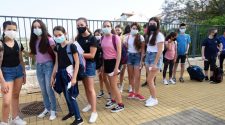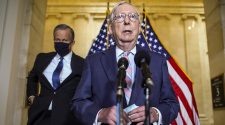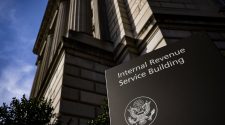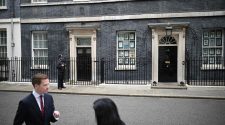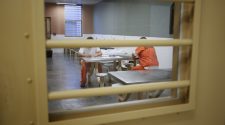THE PROGNOSIS
The coronavirus is now striking in geographic areas where more Americans are older or have underlying health problems, making them extra vulnerable to complications from covid-19, the disease caused by the virus.
That bodes poorly for the U.S. death toll, which has now topped 4,600.
The novel coronavirus first took root on the West and East coasts, where Americans are disproportionately younger and healthier than the general population. Now cases are spiking in Florida, where Gov. Ron DeSantis (R) only yesterday ordered a statewide lockdown, even though 1 in 5 Florida residents are 65 years or older.
“At this point, even though I think there’s a lot of places in Florida that have very low infection rates, it makes sense to make this move now,” said DeSantis, who is reportedly on close terms with President Trump. “I did consult with folks in the White House. I did speak to the president.”
“He agreed with the approach of focusing on the hot spots,” DeSantis added. “But at the same time, he understood that this is another 30-day situation and you’ve got to do what makes the most sense.”
My Daily 202 colleague James Hohmann:
Better late than never? 🦠😷 #getoffthebeach https://t.co/UuUc1J2C5Y
— James Hohmann (@jameshohmann) April 1, 2020
ABC News’s Matt Gutman:
If you are over 80 you are about 240 times more likely to die than you are if you are in your 20’s. Risk for severe COVID-19 increases with each decade of age – @abc https://t.co/sIXL9mxtp0
— Matt Gutman (@mattgutmanABC) April 1, 2020
Cases are also steadily mounting in Michigan, Louisiana, Georgia and West Virginia — states that regularly appear on the “unhealthiest places to live” lists because of the high prevalence of diabetes and heart disease.
Gongwer News Service in Michigan:
Breaking: Michigan has by far its largest number of newly confirmed COVID-19 cases reported in a single day at 1,719 for a total of 9,334 cases. Another 78 people in the state have died of the disease, pushing the death toll to 337.
— Gongwer Michigan (@GongwerMichigan) April 1, 2020
While underlying conditions aren’t always present in victims of the virus, they frequently are. That’s according to illustrative new data from the Centers for Disease Control and Prevention.
Nearly 4 in 5 coronavirus patients put in intensive care units had at least one underlying health condition, out of 7,160 covid-19 cases researchers analyzed. Of the ICU patients, 32 percent had diabetes, 29 percent had cardiovascular disease, 21 percent had chronic lung disease and 12 percent had long-term kidney disease.
Within the entire group, 184 patients died. And 173 of those had an underlying condition.
“Covid-19 is a respiratory disease,” my colleagues Joel Achenbach and William Wan report. “The virus typically infects the upper respiratory tract, but it can also venture deeper into the lungs and in some patients results in pneumonia-like symptoms, requiring hospitalization and sometimes intubation on a ventilator. People who smoke or have chronic lung conditions are especially vulnerable.”
Thirty-eight percent of American adults have a higher risk of developing serious illness from the virus, according to an estimate by the Kaiser Family Foundation. Of that group, just over half are at elevated risk because they’re at least 65. The rest have heart disease, chronic obstructive pulmonary disease (COPD), uncontrolled asthma, diabetes, or a BMI greater than 40.
Former Food and Drug Administration commissioner Scott Gottlieb:
New data from the @CDCgov on the experience of #COVID19 in the U.S. and the prevalence of co-morbid conditions for those affected by disease. https://t.co/fBSzqEL8xW pic.twitter.com/7GAKNJTd8u
— Scott Gottlieb, MD (@ScottGottliebMD) April 1, 2020
The federal data is comparable to statistics states have released. Officials in Louisiana, where 14 percent of people have diabetes, announced that 40 percent of people who died of covid-19 had the illness. Twenty-three percent had chronic kidney disease. Just 3 percent of those who died had no underlying condition.
The virus is now the third-leading daily cause of death for Americans, after cancer and heart disease. It hasn’t even been three weeks since San Francisco became the first city to order a lockdown — and now life has dramatically changed for virtually every American, as people face staying at home for at least four more weeks, and maybe longer.
NPR’s Steve Inskeep:
If you had to pick a day when everything changed, it’s March 11. The president gave a speech. Markets plunged as he spoke. We learned Tom Hanks tested positive. The NBA played its last games. Within days, other leagues and schools shut down. March 11: three weeks ago today.
— Steve Inskeep (@NPRinskeep) April 1, 2020
Vox’s Ezra Klein:
Differences in testing make the data hard to compare, etc, but I’m still not feeling great about this trend. Not at all. https://t.co/mqe01xEwNg pic.twitter.com/5Oyg42hDc5
— Ezra Klein (@ezraklein) April 1, 2020
New York is still considered the area hit hardest by the outbreak. Add reported cases in New Jersey and California, and all three states contain more than half of all reported cases in the United States. But now other states are being upgraded to a deep brown on a color-coded map maintained by the CDC to show where the outbreak is worst.
In Florida, reported cases have doubled in the past four days, to more than 7,000. West Virginia, just behind Florida in its share of the population who are elderly, has reported fewer than 200 cases — but doctors there are preparing for a surge, the Wall Street Journal reports.
Cots set up by the National Guard at a possible COVID-19 treatment site in San Mateo, Calif. (AP Photo/Ben Margot, Pool)
Amid all these dismal headlines, there’s a spot of bright news. Washington and California — those coastal states where the coronavirus first appeared — are finding that social distancing is working.
“Those states were the first to report community cases of covid-19 and also the first in the nation to mandate residents stay at home to keep physically apart,” my Post colleagues Geoffrey Fowler, Heather Kelly and Reed Albergotti report. “Analyses from academics and federal and local officials indicate those moves bought those communities precious time — and also may have ‘flattened the curve’ of infections for the long haul.
“While insufficient testing limits the full picture, it’s clear the disease is spreading at different speeds in different places in the United States. California and Washington continue to see new cases and deaths, but so far they haven’t come in the spikes seen in parts of the East Coast. Social distancing efforts need to continue for several more weeks to be effective, experts say.”
Something else to make you feel a bit better about life right now — a random act of kindness:
A former Capital-Gazette reporter tipped off his old newsroom to this sweet storyhttps://t.co/tuplrly3TS pic.twitter.com/GEF1o3ajhO
— Poynter (@Poynter) April 1, 2020
And some older people are amazingly leaving the hospital after recovering from the virus:
— The nation’s perennial health insurance problems are under a spotlight with the spread of the virus. Nearly 29 million Americans aren’t covered, a serious financial problem if they find themselves with a complicated case of covid-19.
President Trump was remarkably candid about the problem at last night’s coronavirus task force briefing. He even threw Vice President Pence under the bus, after Pence gave a rambling answer to a question about whether the administration would try to expand Medicaid to more middle-class Americans who lack affordable coverage.
“I think it is a very fair question though and it is something we are really going to look at because it doesn’t seem fair,” Trump told Fox News’s John Roberts.
“If you have it you have a big advantage and at a certain income level you do. But I think it is one of the greatest answers I have ever heard because Mike was able to speak for five minutes and not even touch your question…I said that’s what you call a great professional,” the president said. “But let me just tell you…it’s really a fair question and it is something we are looking into.”
Fact time:
— The 2010 Affordable Care Act allowed states to expand Medicaid to adults earning up to 133 percent of the federal poverty level. That has resulted in roughly 18 million more people enrolling in the program.
— The Trump administration is refusing to defend the ACA in a lawsuit the Supreme Court will hear next fall, instead arguing all of it – including the Medicaid expansion part – is unconstitutional.
— Nor has the Trump administration encouraged more states to expand Medicaid under the ACA. In 2012, the Supreme Court said states could reject Medicaid expansion, and some conservative states still do.
But the Trump administration has done this in the season of coronavirus: It has given 41 states emergency permission through “Section 1135 waivers” to skip steps normally required to enroll people in Medicaid or bring more health providers into the program. The purpose of these waivers is to help more low-income people get health coverage during an emergency situation. (Health 202 wrote about these waivers here.)
The nonpartisan Kaiser Family Foundation:
41 states now have approvals from @CMSGov for emergency #COVID19 Medicaid waivers.
Find the details of all approved waivers here: https://t.co/bT5FldFFx9
— Kaiser Family Foundation (@KFF) April 1, 2020
The administration is also refusing to open a special enrollment period for Healthcare.gov. But people who have lost their employer-sponsored plans can already enroll in individual market plans, because losing one’s job coverage is a qualifying life event that makes enrollment in the midst of a plan year permissible.
AHH, OOF and OUCH
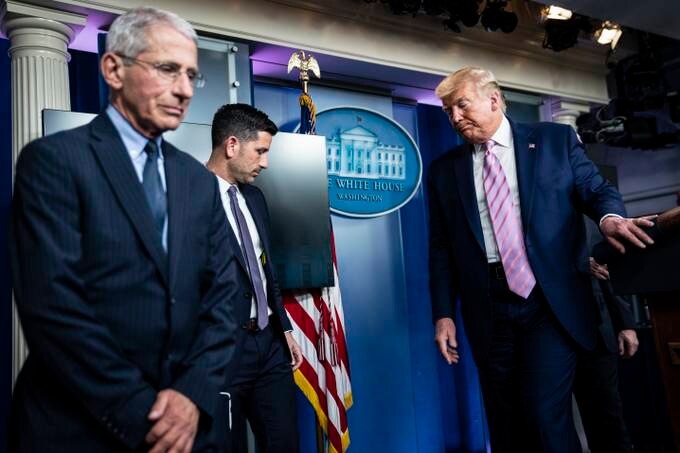
President Trump departs with Anthony Fauci, director of the National Institute for Allergy and Infectious Diseases, after a briefing. (Jabin Botsford/The Washington Post)
AHH: The federal government has stepped up the security for Anthony Fauci as a result of growing threats against the nation’s top infectious-diseases expert, who has been the face of the U.S. response to the coronavirus.
In addition to threats, Fauci has received unwelcome communication from eager admirers, our Post colleagues Isaac Stanley-Becker, Yasmeen Abutaleb and Devlin Barrett reports.
“Fauci has become a public target for some right-wing commentators and bloggers, who exercise influence over parts of the president’s base,” they write. “As they press for the president to ease restrictions to reinvigorate economic activity, some of these figures have assailed Fauci and questioned his expertise.”
Fauci was asked about whether he was receiving protection during Wednesday’s briefing. He said he “wouldn’t comment” and referred reporters to the Department of Health and Human Services. But Trump interjected, saying: “He doesn’t need security. Everybody loves him.”
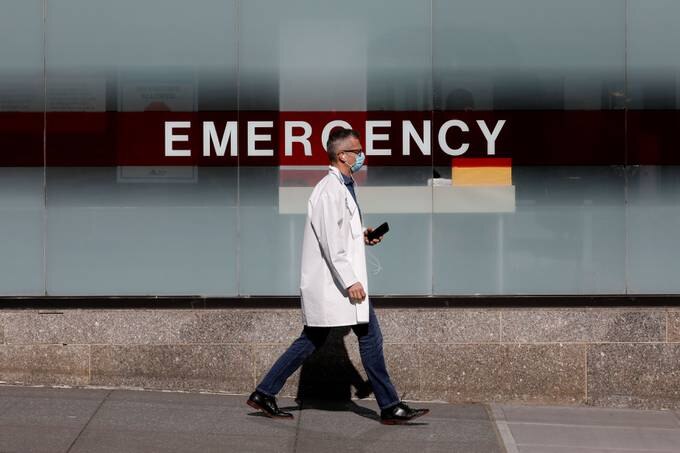
A doctor wears a protective mask as he walks outside Mount Sinai Hospital in Manhattan. (Brendan Mcdermid/Reuters)
OOF: The federal government’s stockpile of medical supplies — respirator masks, gloves and other personal protective equipment — is nearly exhausted. That means the Trump administration and states are scrambling for the personal protective equipment that medical workers desperately need as they tackle the coronavirus.
The number of patients is surging. Health-care workers are putting their lives at risk to help them. Yet a pair of Department of Homeland Security officials told our Post colleague Nick Miroff the supply is nearly gone, “despite assurances from the White House that there is availability.”
“The stockpile was designed to respond to handful of cities. It was never built or designed to fight a 50-state pandemic,” one DHS official said. “This is not only a U.S. government problem. The supply chain for PPE worldwide has broken down, and there is a lot of price-gouging happening.”
Governors are pleading. But there are “few signs the Trump administration is making efforts to stop the export shipments or seize the supplies for use in U.S. hospitals, despite statements from Attorney General William Barr last week that U.S. wholesalers hoarding masks and other supplies would get ‘a knock on your door,’ ” Nick writes.
— Another major hiccup with the government’s supply stockpile: Thousands of ventilators are broken, unmaintained or otherwise not usable as they sit in storage, the New York Times’s David E. Sanger, Zolan Kanno-Youngs and Nicholas Kulish report.
“The revelation came in response to inquiries to the Department of Health and Human Services after state officials reported that some of the ventilators they received were not operational, stoking speculation that the administration had not kept up with the task of maintaining the stockpile,” they write. “In fact, the contract with a company that was maintaining the machines expired at the end of last summer.”
— Supplies are low at blood banks, too. People volunteered to donate blood en masse to make sure worried hospitals had the blood stores needed for patients who required transfusions. But now there’s “growing concern that unexpected developments during the pandemic could again threaten the supply,” our Post colleague Alex Horton reports.
He adds: “Blood blanks have stressed the need to stretch donations into the future. Yet as the virus continues its deadly march, potential donors and blood bank staffers could be taken out of commission.”
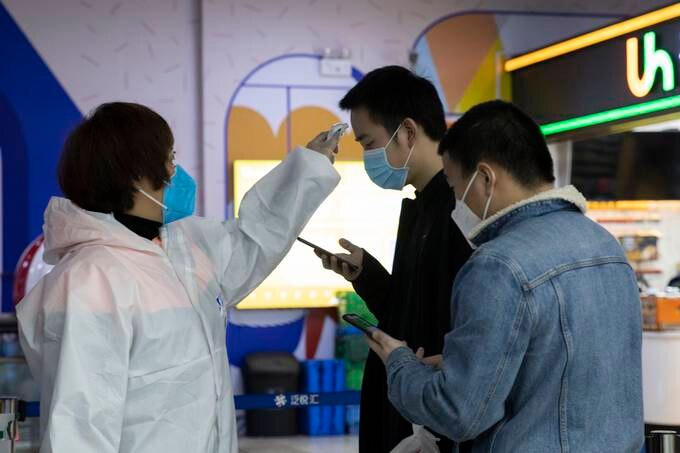
Residents get their temperature checked in central China’s Wuhan province. (Ng Han Guan/AP)
OUCH: A classified report submitted to the White House warns that China underreported the total number of coronavirus cases and deaths the country experienced, Bloomberg News’s Nick Wadhams and Jennifer Jacobs report. The report from the U.S. intelligence community says that “China’s public reporting on cases and deaths is intentionally incomplete. Two of the officials said the report concludes that China’s numbers are fake,” they add.
One U.S. official told Bloomberg News that the White House got the report last week.
“The outbreak began in China’s Hubei province in late 2019, but the country has publicly reported only about 82,000 cases and 3,300 deaths, according to data compiled by Johns Hopkins University,” Nick and Jennifer write. “That compares to more than 189,000 cases and more than 4,000 deaths in the U.S., which has the largest publicly reported outbreak in the world.”
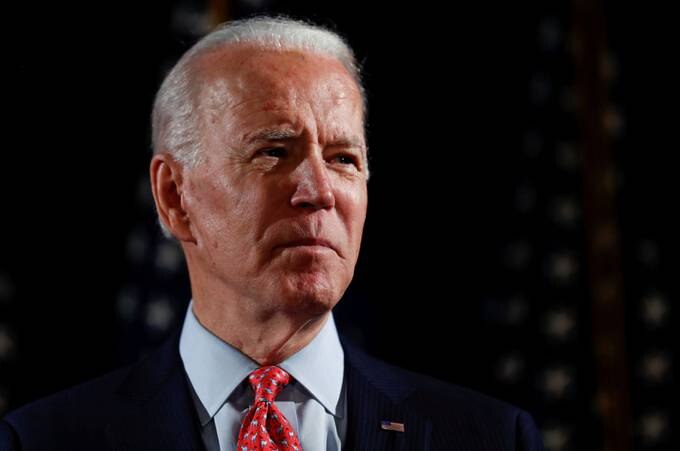
Joe Biden. (Carlos Barria/Reuters)
— Joe Biden is raising doubts that Democrats will hold a party convention this summer.
“It’s hard to envision that,” the former vice president said when asked whether the Democratic National Convention will go on as planned in July amid the coronavirus pandemic.
In an interview on MSNBC, he added: “We should listen to the scientists.”
“We ought to be able to do what we were able to do in the middle of the Civil War all the way through to World War II — have Democratic and Republican conventions and primaries and elections, and still have public safety,” Biden said. “We’re able to do both.”
He called on states to prepare now for absentee ballots for the general election, and for secretaries of states to plan for virtual elections, with secure but remote voting, our Post colleague Matt Viser reports.
— Trump also said yesterday he would be willing to speak with Biden on the phone about the coronavirus pandemic. “I’d love to speak with him,” the president said. “… [I]f he’d like to call I would absolutely take his call.”

— Other news to know:
By the numbers:
- At a population level, the virus is essentially everywhere, our Post colleague Christopher Ingraham reports. “More than 6 in 10 Americans live in counties where people have died of the disease caused by the coronavirus, and about 95 percent live in places reporting at least one case, according to a Washington Post analysis of data compiled by Johns Hopkins University,” he writes.
- The death toll in the United States surged past 4,600 “as Vice President Pence issued an ominous warning that America’s situation is most comparable to Italy’s struggle with the virus,” The Post’s Matt Zapotosky, Nick Miroff and Ian Duncan write.
The Trump administration’s response:
- The Treasury announced that Social Security beneficiaries who typically don’t file a tax return will still automatically receive a $1,200 stimulus payment, The Post’s Heather Long reports.
And from Capitol Hill:
- More than 13,000 doctors sent a letter to Congress calling on lawmakers to help ensure their safety, our Post colleague Candace Buckner reports.
- Senate Majority Leader Mitch McConnell (R-Ky.) said he plans to ignore efforts by House Speaker Nancy Pelosi (D-Calif.) to discuss another rescue bill, The Post’s Robert Costa reports.
The hardest hit:
- Families are desperately trying to get experimental coronavirus treatments, but one bioethicist at New York University’s Langone Medical Center told The Post’s Christopher Rowland that these medicines are a “desperate hope. These are very long shots.”
- The coronavirus is poised to spread to developing nations that are already vulnerable, with troubled health-care systems, fragile governments and impoverished populations, The Post’s Anthony Faiola, Sudarsan Raghavan, Max Bearak and Terrence McCoy report.
- The Agriculture Department has stalled the approval of requests from states to reduce some of the paperwork and information needed when food banks hand over food, The Post’s Jenna Johnson reports.
On the front lines:
- The outbreak is putting pressure on the telemedicine industry’s capacity, which the Wall Street Journal’s Parmy Olson notes was once a niche industry that’s gone mainstream as people seek help from home.


